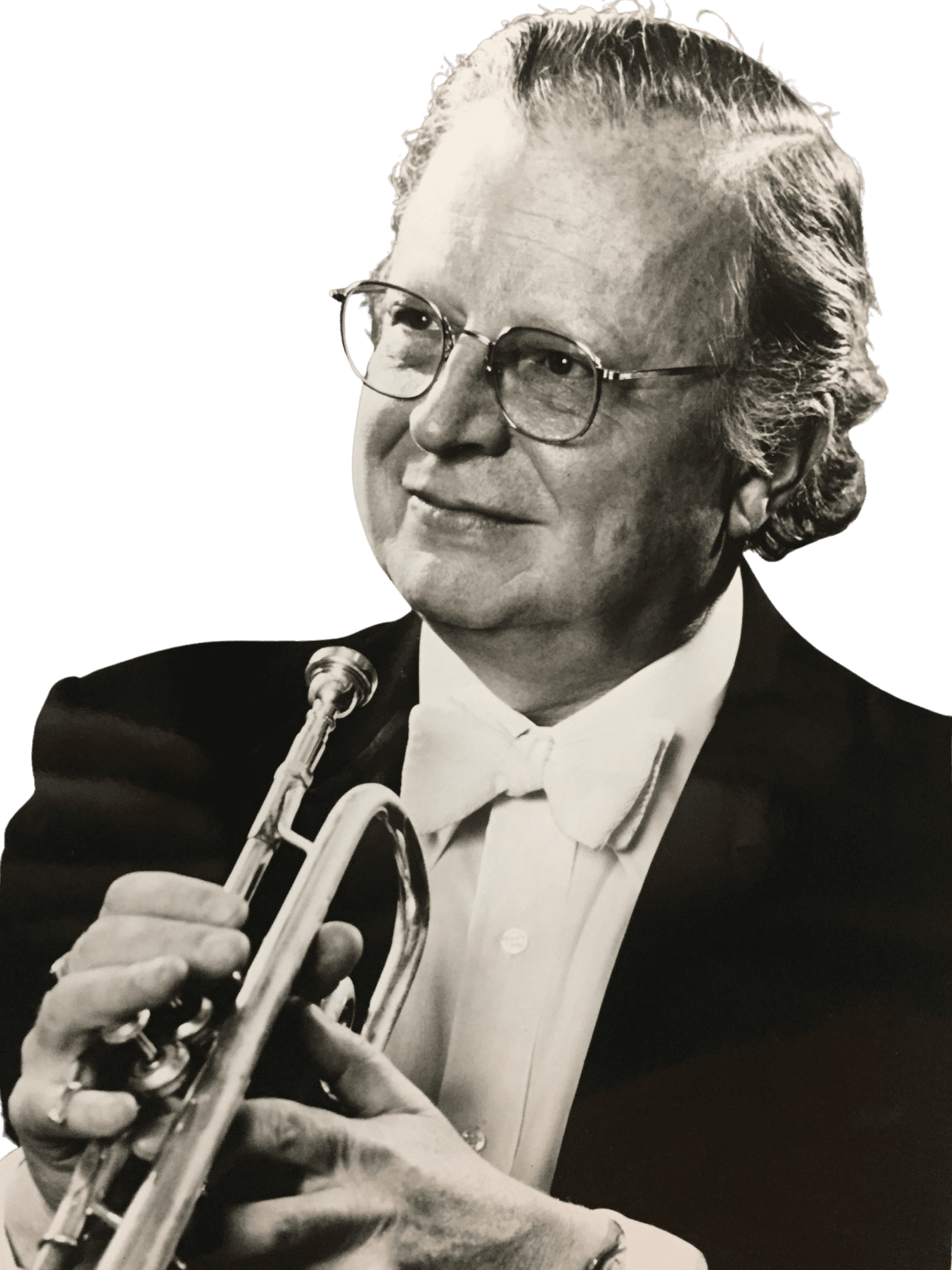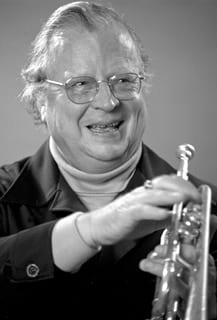Dedicated to sharing important information about
Adolph Herseth

Adolph Herseth (1921-2013) was one of the most accomplished and celebrated orchestral trumpet players of all time. He was the principal trumpet of the Chicago Symphony Orchestra for an unprecedented 53 years (1948-2001), and his distinctive musical style remains influential for listeners as well as professional and aspiring trumpeters everywhere.
Many younger musicians may not be familiar with the personal history and professional pathway of Adolph Herseth, and there is no better way to learn more about him than from his own words. Accordingly, these firsthand resources are shared with the approval and support of the Herseth family and are from the collection of Adolph Herseth. Additional items will be added at regular intervals. Researchers wishing to reproduce any of the contents may request permission via the contact page. Enjoy!
John Hagstrom
Second Trumpet
Chicago Symphony Orchestra


About Adolph Herseth
Mr. Herseth was the Chicago Symphony Orchestra’s principal trumpet from 1948 to 2001, a stretch roughly double the average career span for elite instrumentalists and coinciding with the orchestra’s rise to the top ranks. Under Georg Solti and four other conductors he defined the orchestra’s distinctive brass sonority. The sparkling virtuosity of his playing — and the way his cheeks flushed beet-red when he played staccato high notes — made Mr. Herseth something of a celebrity among classical music audiences in Chicago. Autograph seekers often mobbed him at the stage door of Orchestra Hall, a trumpet player or two usually among them asking to study at his feet.
Describing Mr. Herseth as “quite possibly the most dazzling player on his instrument in the world today,” Donal Henahan of The New York Times lamented his relative obscurity, attributing it largely to the paucity of great music for orchestral trumpet. By his own account, Mr. Herseth, a genial, plain-spoken native of rural Minnesota, did not seek wider fame, saying he found more pleasure in collective music-making than in solo playing. “That’s the biggest thrill of all,” he told The Chicago Tribune, “just to be in a band like this, with colleagues like these, and with conductors for whom we can make exciting music.”
If it doesn’t work, find something else.”
For his 50th anniversary with the symphony, in 1998, Mr. Herseth resisted plans for a gala event that would have put him in the spotlight — “tooting my own horn,” in his words. Instead, he invited a large contingent of colleagues, former students and old friends, including the trumpet player and former “Tonight Show” band leader Doc Severinsen, to join in the concert.
Adolph Sylvester Herseth was born on July 25, 1921, to Cora and Adolph Herseth in Lake Park, a town of only several hundred people in northern Minnesota’s lake country. His father was a schoolteacher, school administrator and director of a children’s orchestra. Mr. Herseth attended Luther College in Decorah, Iowa, intending to become a music teacher. But after serving in the Navy during World War II and playing trumpet in military bands, he decided on a career as a performer.
In 1948 he was working on a master’s degree at the New England Conservatory of Music in Boston when he received a telegram from Artur Rodzinski, the Chicago Symphony’s music director, summoning him to an audition. Someone at the conservatory must have recommended him, Mr. Herseth said later. He never learned who.
The audition was a stunning success. To Mr. Herseth’s surprise, Mr. Rodzinski announced immediately afterward that Mr. Herseth, then 26, would be the new first trumpet. The emotional energy and perfectly articulated sonic detail for which Mr. Herseth became known are prominent in many of the Chicago Symphony’s most acclaimed recordings, including Mahler’s Fifth Symphony and the “promenade” parts in Mussorgsky’s “Pictures at an Exhibition.”
After giving up his post in 2001, Mr. Herseth held the title of first trumpet emeritus until 2004, when he officially retired. John Hagstrom, who sat next to Mr. Herseth for several years as second trumpet, recalled a story about a conductor who seemed unnerved by Mr. Herseth’s red-faced appearance during the most taxing trumpet passages. “Mr. Herseth, maybe put on some powder,” the conductor suggested. Mr. Herseth demurred, he told Mr. Hagstrom. “It shows people I’m trying,” he said.
(excerpted from Adolph Herseth’s obituary appearing in the New York Times on April 28th, 2013, written by Paul Vitello)


